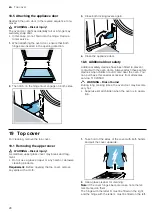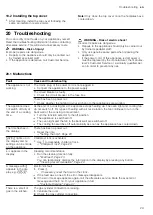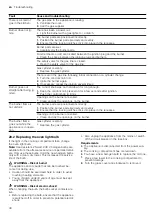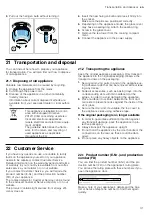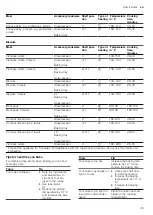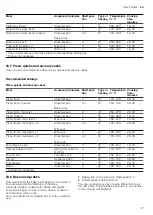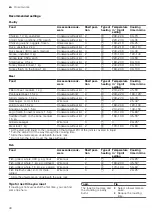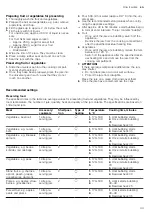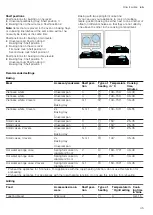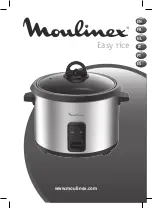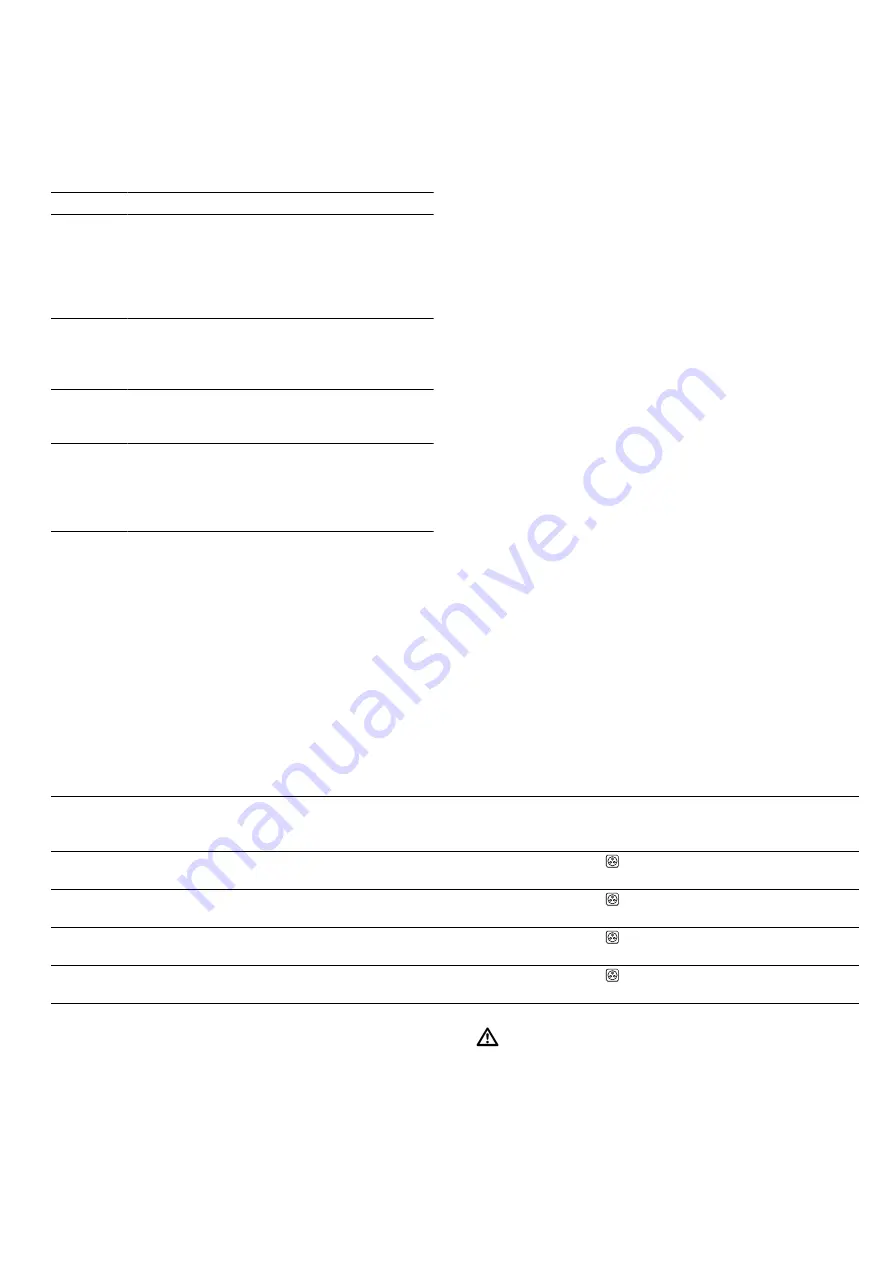
en
How it works
42
23.12 Tips for keeping acrylamide levels to
a minimum when cooking
Acrylamide is harmful to your health and is produced
when you cook cereal and potato products at very high
temperatures.
Meal
Tip
General
informa-
tion
¡
Keep cooking times as short as pos-
sible.
¡
Cook food until it is golden brown, but
not too dark.
¡
Use large, thick pieces of food. These
contain less acrylamide.
Baking
¡
Set max. top/bottom heating to
200 °C.
¡
Set the temperature in hot air mode to
max. 180 °C.
Biscuits
¡
Brush baked items and biscuits with
egg or egg yolk. This reduces the pro-
duction of acrylamide.
Oven
chips
¡
Spread the chips out evenly and in a
single layer on the baking tray.
¡
Cook at least 400 g at once on a bak-
ing tray so that the chips do not dry
out.
23.13 Drying
You can achieve outstanding drying results for the food
using hot air. With this type of preserving, flavours are
concentrated as a result of the dehydration.
The temperature and drying time depend on the type,
moistness, ripeness and thickness of the food. The
longer you leave the food to be dried, the better it will
be preserved. The thinner you cut the slices, the
quicker the drying process will be and the more flavour
the dried food will retain. Settings ranges are specified
for this reason.
Preparation for drying
1.
Only use unblemished, fresh fruit, vegetables and
herbs and wash them thoroughly. Line the wire rack
with greaseproof paper or parchment paper. Drain
the excess water from the fruit and then dry it.
2.
If required, cut the fruit into thin pieces or slices of
equal size. Place unpeeled fruit onto the dish with
the sliced surfaces facing upwards.
Ensure that neither fruit nor mushrooms overlap on
the wire rack.
3.
Grate vegetables and then blanch them. Drain the
excess water from the blanched vegetables and
spread them evenly on the wire rack.
4.
Dry herbs on the stem. Spread the herbs out evenly
and slightly heaped on the wire rack.
5.
Turn very juicy fruit and vegetables several times.
After drying, remove the dried fruit and vegetables
from the paper immediately.
Recommended settings
Drying
The table contains settings for drying various foodstuffs. If you want to dry food that is not listed in the table, you
should use similar foodstuffs in the table as a reference.
Note:
Use the following shelf positions for drying:
¡
1 wire rack: Shelf position 3
¡
2 wire racks: Shelf positions 3 + 1
Meal
Accessory/cookware
Shelf position
Type of
heating
Temperat-
ure in °C
Cooking
time,
minutes
Pome fruit, e.g. apple rings, 3 mm
thick, 200 g per wire rack
Wire rack
3
3+1
80
4–8 hours
Root vegetables, e.g. carrots,
grated, blanched
Wire rack
3
3+1
80
4–7 hours
Mushrooms, sliced
Wire rack
3
3+1
80
5–8 hours
Herbs, stalks removed
Wire rack
3
3+1
60
2-5 hours
23.14 Preserving food
You can preserve fruit and vegetables by heating them
and sealing them in air-tight jars.
¡
Only use heat-resistant, clean, undamaged pre-
serving jars, rubber seals and clips.
¡
Only use fruit and vegetables which are in perfect
condition.
¡
Only use jars that are the same size and contain the
same food.
WARNING ‒ Risk of injury!
If the preserving process is not carried out correctly,
the preserving jars may crack.
▶
Make sure that you use the specified setting values.
▶
Use clean and undamaged preserving jars.
▶
Place no more than six ½ litre or 1 litre jars of food
in the oven at a time. Do not use jars that are larger
than this.

